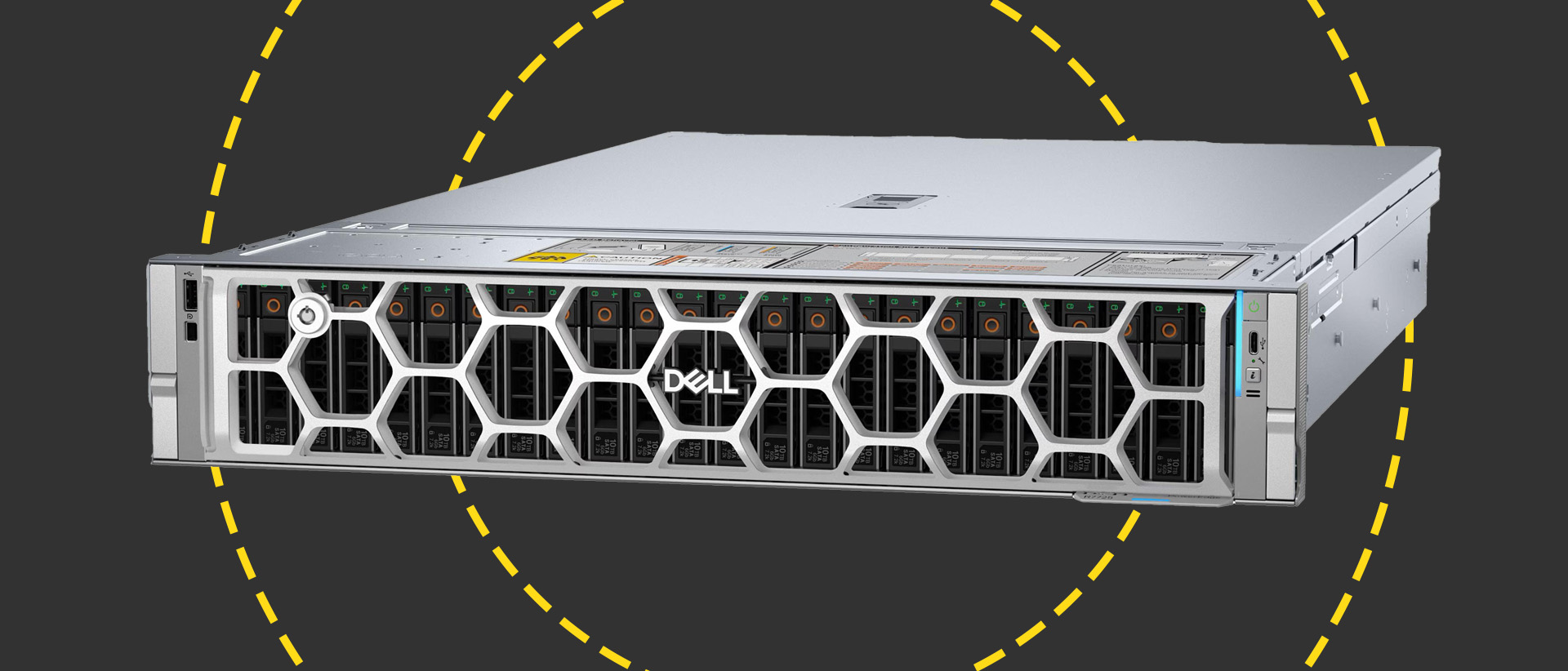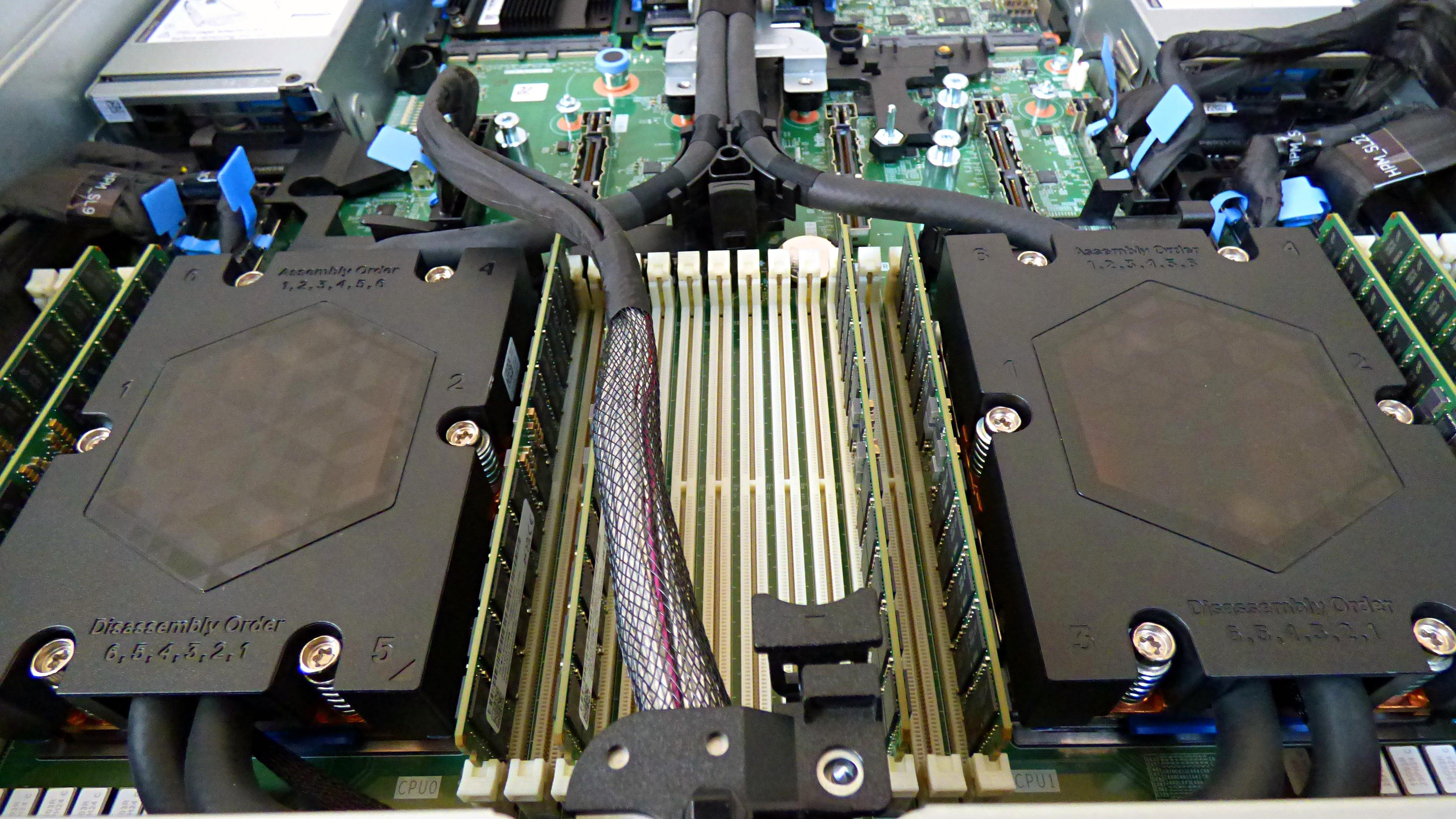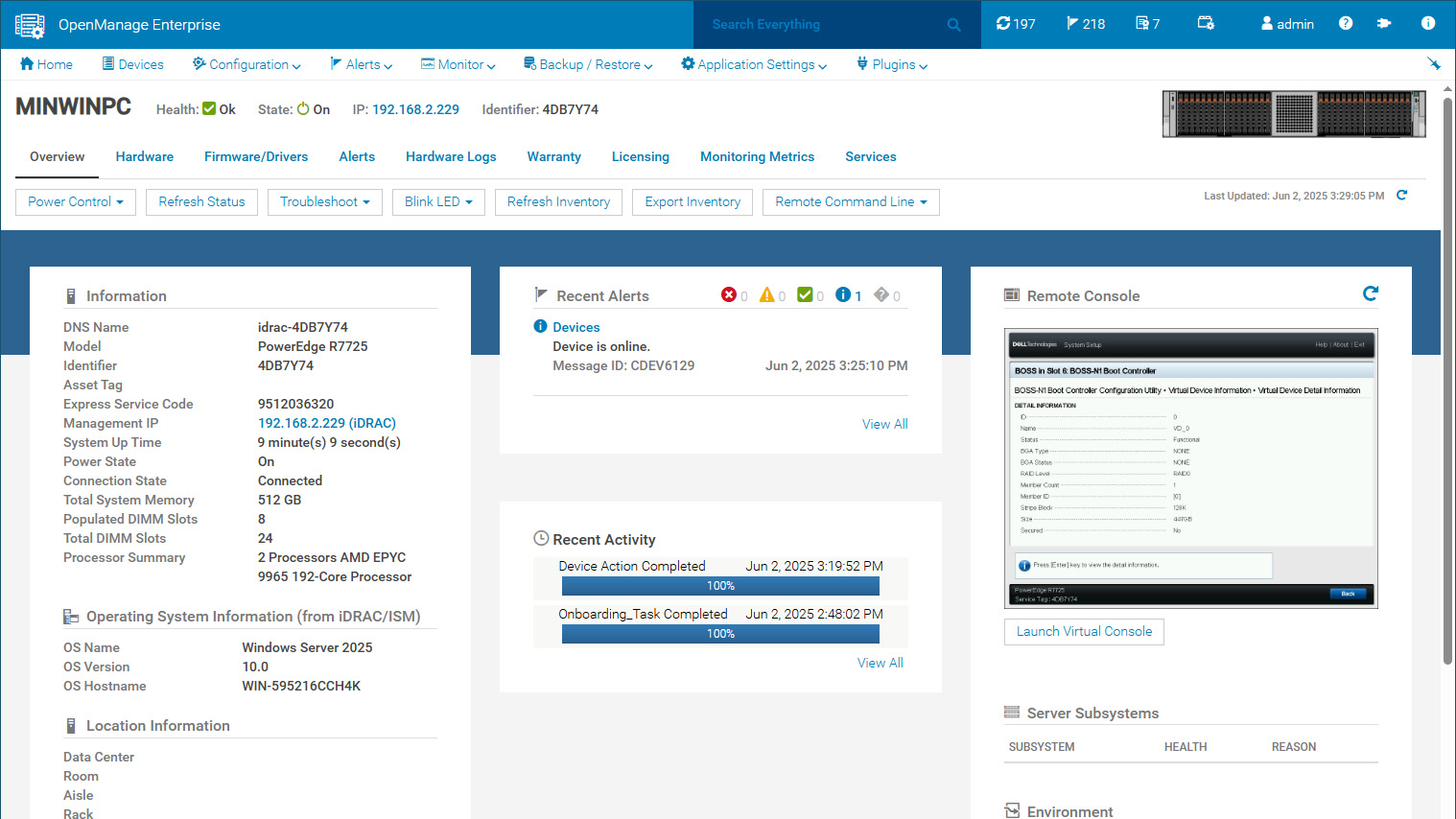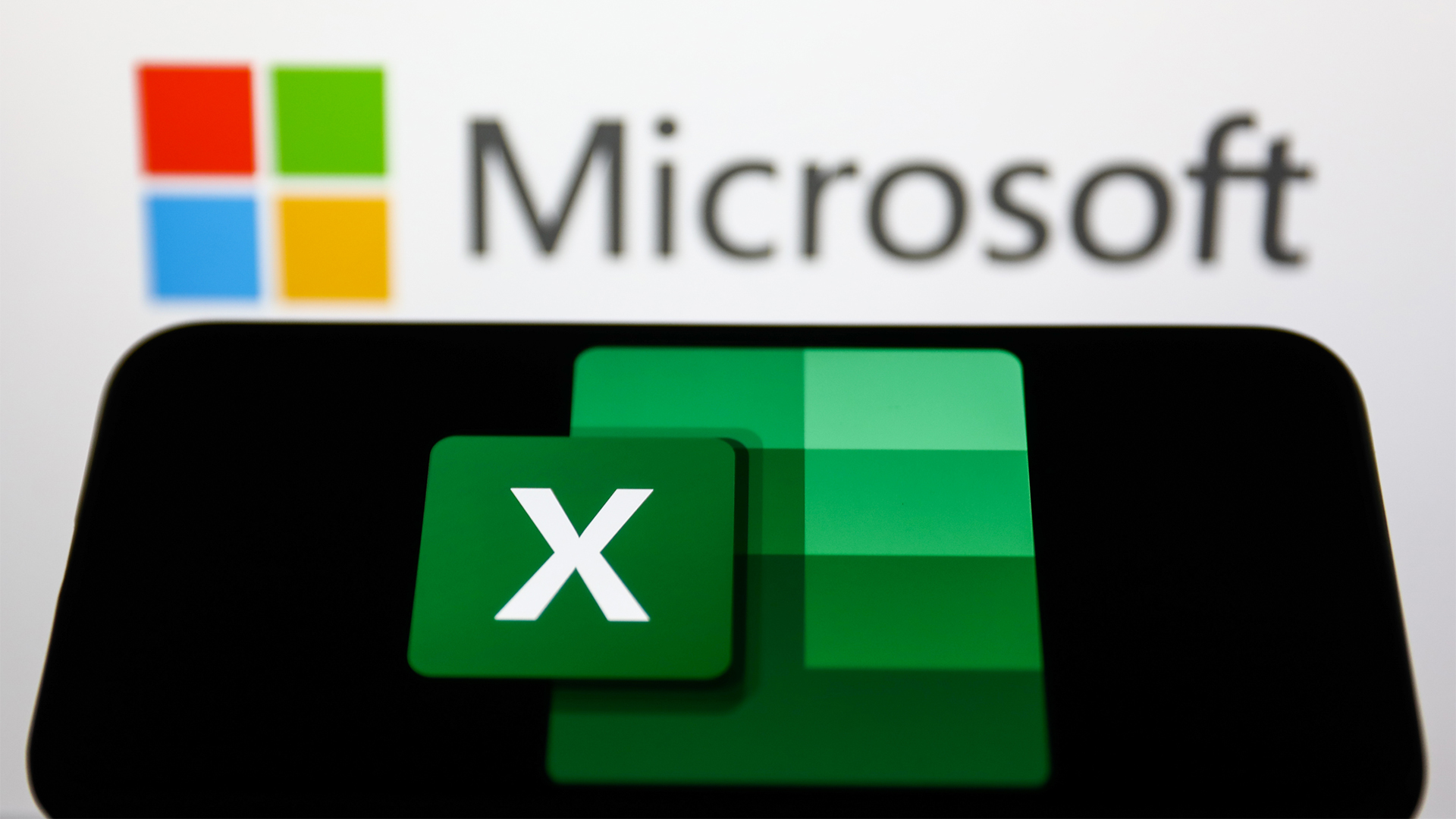Dell PowerEdge R7725 review: A mighty AMD rack server with an astonishing core density
The R7725 delivers on all counts as this powerful and adaptable rack server has a hardware specification for every occasion

-
+
Superb design and build
-
+
Massive EPYC core density
-
+
Smart cooling features
-
+
Big storage and expansion potential
-
+
Classy remote management services
-
-
High-end specifications are pricey

Enterprises looking to put some serious processing power into their data centers will find the PowerEdge R7725 blows everything else away. Topping Dell's Gen17 server portfolio, this dual-socket (2P) rack mounter supports AMD's EPYC 9005 CPUs right up to the bad boy 192-core 9965 – that's an incredible 384 physical cores in only 2U of rack space.
It's no surprise the R7725 is targeting demanding workloads such as big data analytics, AI/ML, HPC and virtualization but it will also appeal to businesses with big server consolidation plans. Flexibility is the name of the game as along with support for 6TB of 6,400MT/s DDR5 memory, the R7725 has room for a wide range of storage configurations including up to forty E3.S Gen5 NVMe SSDs.
Expansion potential is equally impressive as the server offers up to eight PCIe Gen5 slots and teams them up with dual OCP 3 slots. AI workloads are covered as it can handle two 400W double-width (DW) or eight 75W single-width (SW) GPU cards and you can specify air-cooled systems with Dell's DLC (direct liquid cooling) kits available for higher-spec systems.
Dell PowerEdge R7725 review: Under the hood

Removing the lid reveals a superbly designed interior with the server employing Dell's standard T-shaped motherboard. This allows the PSUs to be located on each side of the chassis to create a more balanced air flow which ensures there are no hot spots on one side of the server.
General chassis cooling is handled by a bank of up to six hot-plug fan modules behind the drive backplane. We have a full house of Gold high-performance fans but Dell also offers Silver and Platinum versions.
Dell clearly wanted to show off to us as it supplied the R7725 review system with dual 192-core EPYC 9965 CPUs. We also had the DLC kit fitted with the pipework from the CPU's low-profile cold plates incorporating leak detection systems and neatly routed through the center of the chassis to the rear.
The R7725 will appeal to businesses that aren't ready for liquid cooling in their data centres as Dell's Smart Cooling technology is so efficient it allows the server to support most configurations in air-cooled environments. The 9965 CPUs may have a hefty 500W TDP but as long as you're mindful of the thermal restrictions on GPU use, the R7725 can be air cooled if you specify T-wing heatsinks and Platinum fans.
Sign up today and you will receive a free copy of our Future Focus 2025 report - the leading guidance on AI, cybersecurity and other IT challenges as per 700+ senior executives
Dell PowerEdge R7725 review: Storage
The R7725 is highly flexible in the storage department as it supports a maximum of 12 LFF or 24 SFF SAS/SATA drives. Unlike the R7625, it doesn't support rear drive cages but you can mix and match 16 SFF SAS/SATA drives with 8 U.2 NVMe SSDs.
AMD chipsets don't have any embedded RAID features but that's no problem as you can choose from three of Dell's PERC RAID controllers. These range from the entry-level front-facing fPERC H365i right up to the latest high-performance PERC13 H975i which has a sharp focus on storage acceleration for AI workloads.
The system on review was supplied with two 16-bay E3.S cages with the backplanes cabled directly to the motherboard's embedded PCIe signal connectors. In between them is a blank panel with a grill for improved airflow and this can be replaced with another drive cage for a total of 40 E3.S NVMe SSDs.
You can keep all your drives for data storage as the R7725 supports Dell's BOSS-N1 DC-MHS (data center modular hardware system) adapter. Slotting in at the rear, it provides dual hot-plug M.2 NVMe SSD slots with a choice of two 480GB or 960GB sticks which can be mirrored or striped.
Dell PowerEdge R7725 review: Server management

Dell's iDRAC10 is a standard setter for remote management and introduces a wealth of new features including a dedicated security processor endowed with a cyber-resilient architecture. It offers MFA (multi-factor authentication), integrated Root-of-Trust (RoT) encryption and stronger algorithms to verify hardware component integrity during the secure boot phase.
Gen17 PowerEdge servers have the iDRAC10 implemented as a DC-SCM (datacenter-ready secure control module) which moves server management and security functions off the motherboard and onto an OCP-compliant edge-connected board. It's a smart move as Dell can develop new features independently of the server and use a standard form-factor across all the range.
The iDRAC10 web interface presents a wealth of easily accessible information about server operations, component status and health along with a full hardware inventory and direct access to BIOS and RAID configurations. You can configure alerts for pretty much any event you want and we were pleased to see the iDRAC10 had options to create these for the DLC system and apply actions such as a graceful power down or immediate shutdown if coolant leaks are detected.
We run Dell's OpenManage Enterprise (OME) software as a Hyper-V VM in the lab which provides discovery, monitoring, remote control and power management for all its servers. You'll need this if you want to use Dell' s APEX AIOps Observability cloud hosted infrastructure management platform as OME functions as a collector and sends server telemetry and alert logs to it every five minutes.
Dell PowerEdge R7725 review: Is it worth it?
Prices start at around £13K excluding VAT for entry-level models but you'll need deep pockets if our system takes your fancy as this comes in at over £105K although the 20 E3.S NVMe SSDs account for nearly half of this. That said, the PowerEdge R7725 will pay back handsomely on your investment as it offers the industry's highest core density in a 2U rack server.
It's a highly versatile server well-suited to a wide range of enterprise workloads and is ideal for businesses aiming to replace their underperforming legacy servers with fewer systems and free up valuable rack space. Storage and expansion potential are very good, management and monitoring services are beyond reproach and Dell's smart cooling design allows it to run most specifications in air-cooled environments.
Dell PowerEdge R7725 specifications
Chassis | 2U rack | Row 0 - Cell 2 |
CPU | 2 x 192-core 2.25GHz AMD EPYC 9965 | Row 1 - Cell 2 |
Memory | 512GB 6,400MT/s DDR5 (max 6TB) | Row 2 - Cell 2 |
Storage bays | 32 x E3.S NVMe SSD (max. 40) | Row 3 - Cell 2 |
RAID | None | Row 4 - Cell 2 |
Storage provided | 20 x 3.84TB E3.S NVMe SSDs | Row 5 - Cell 2 |
Other Storage | Dell BOSS-N1 DC-MHS with 2 x 480GB M.2 NVMe SSDs | Row 6 - Cell 2 |
Network | 2 x Broadcom BCM57508 dual-port 100GbE PCIe | Row 7 - Cell 2 |
Expansion | 8 x PCIe Gen5 slots, 2 x OCP 3 Gen5 slots | Row 8 - Cell 2 |
Cooling | 6 x HPR Gold hot-plug fans, Dell DLC | Row 9 - Cell 2 |
Power | 2 x 3,200W Titanium hot-plug PSUs | Row 10 - Cell 2 |
Management | Dell iDRAC10 DC-SCM Datacenter | Row 11 - Cell 2 |
Warranty | 3Yr ProSupport On-Site NBD | Row 12 - Cell 2 |
Dave is an IT consultant and freelance journalist specialising in hands-on reviews of computer networking products covering all market sectors from small businesses to enterprises. Founder of Binary Testing Ltd – the UK’s premier independent network testing laboratory - Dave has over 45 years of experience in the IT industry.
Dave has produced many thousands of in-depth business networking product reviews from his lab which have been reproduced globally. Writing for ITPro and its sister title, PC Pro, he covers all areas of business IT infrastructure, including servers, storage, network security, data protection, cloud, infrastructure and services.
-
 Trump's AI executive order could leave US in a 'regulatory vacuum'
Trump's AI executive order could leave US in a 'regulatory vacuum'News Citing a "patchwork of 50 different regulatory regimes" and "ideological bias", President Trump wants rules to be set at a federal level
By Emma Woollacott Published
-
 Microsoft Excel is still alive and kicking at 40 – and it's surging in popularity as 82% of finance professionals report ‘emotional attachment’ to the spreadsheet software
Microsoft Excel is still alive and kicking at 40 – and it's surging in popularity as 82% of finance professionals report ‘emotional attachment’ to the spreadsheet softwareNews A recent survey found Gen Z and Millennial finance professionals have a strong “emotional attachment” to Microsoft Excel
By Emma Woollacott Published
-
 LastPass hit with ICO fine after 2022 data breach exposed 1.6 million users – here’s how the incident unfolded
LastPass hit with ICO fine after 2022 data breach exposed 1.6 million users – here’s how the incident unfoldedNews The impact of the LastPass breach was felt by customers as late as December 2024
By Emma Woollacott Published
